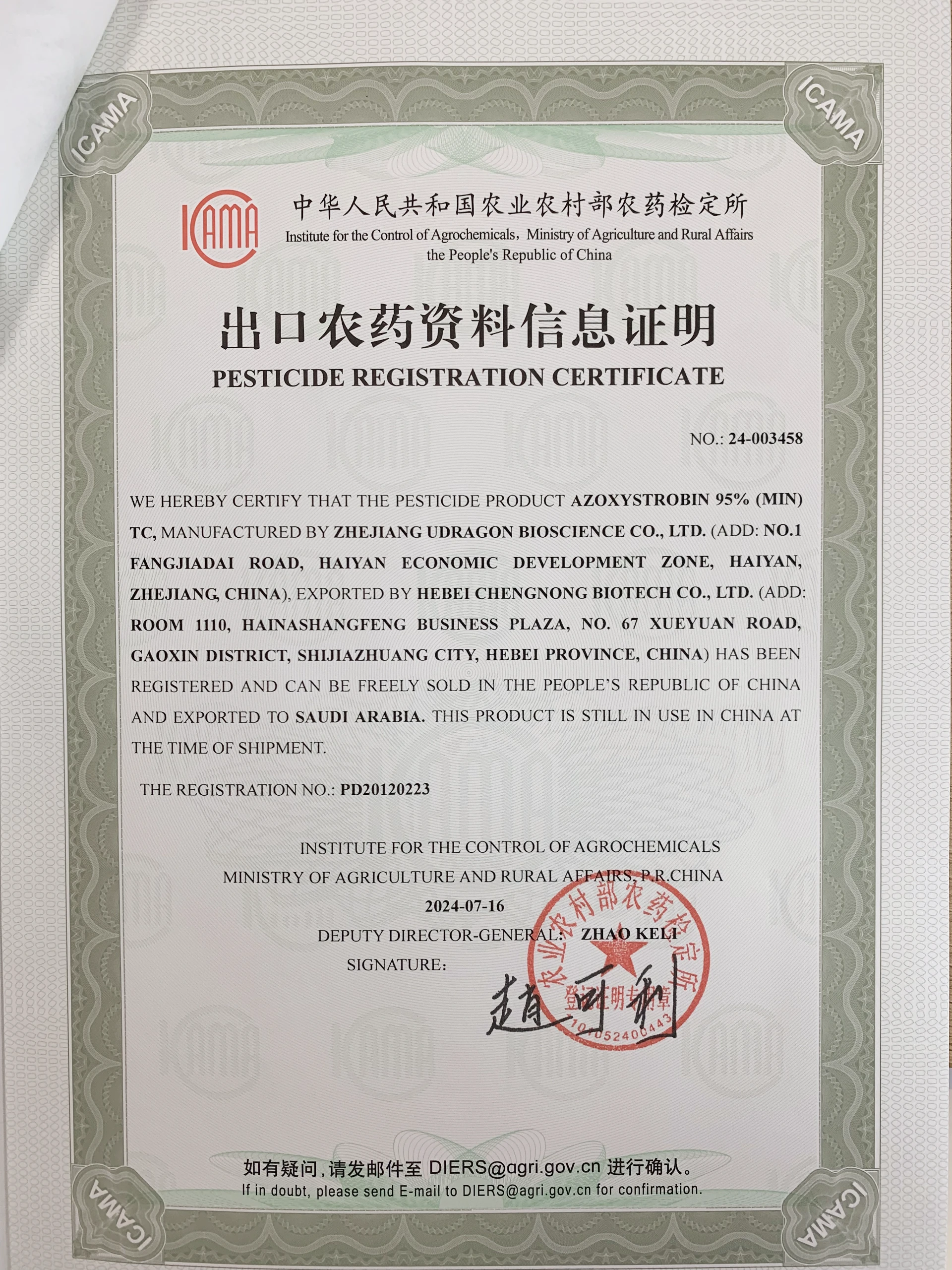
Dec . 11, 2024 10:12 Back to list
Azoxystrobin Application Rates and Recommendations from Leading Manufacturers
Understanding Azoxystrobin Dosage Key Considerations for Effective Use
Azoxystrobin is a systemic fungicide widely used in agricultural practices, particularly in the cultivation of various crops. It belongs to the chemical class of strobilurins and serves as a protective agent against a broad spectrum of fungal diseases. As with any agrochemical, understanding the proper dosage and application methods is essential for achieving optimal results while minimizing potential risks to the environment and human health.
Importance of Correct Dosage
The effectiveness of azoxystrobin largely depends on its dosage. An inadequate amount may lead to insufficient disease control, while overdosing can result in plant toxicity and increased resistance development in fungal populations. Manufacturers provide precise dosage recommendations based on extensive research and field trials, ensuring that users can maximize the efficacy of the product while adhering to safety guidelines.
Recommended Dosages
Typically, azoxystrobin is recommended at a dosage range of 100 to 200 grams per hectare, depending on the crop type, the specific fungal diseases targeted, and environmental conditions. For example, for cereals like wheat and barley, the recommended application might be around 100-150 g/ha, while for fruits and vegetables, the dosage may vary between 150-200 g/ha. Pre-harvest intervals (PHI) and maximum residue limits (MRLs) also play a significant role in determining the applicator's approach. It is crucial to consult specific product labels and local agricultural extension services for tailored recommendations.
Application Timing and Method
azoxystrobin dosage manufacturer

Beyond dosage, the timing of azoxystrobin application is crucial for optimal efficacy. It is generally most effective when applied preventively, before the onset of disease symptoms. This proactive approach can help protect crops during critical growth phases, particularly when environmental conditions favor fungal proliferation. The application can be carried out through various methods, including foliar sprays and seed treatments, each requiring its dosage adjustments. For example, when used as a seed treatment, the concentration may differ significantly from that for foliar applications; hence, adherence to manufacturer instructions is vital.
Formulation Types
Azoxystrobin is available in several formulations, including liquid concentrates, granules, and emulsifiable concentrates. Each type has specific usage instructions, and the dosage may vary accordingly. Additionally, some products may combine azoxystrobin with other active ingredients to target multiple disease pathogens, impacting the overall dosage recommendations. It is essential to read the product label carefully and follow the manufacturer’s guidelines to ensure that the application stands effective against the intended pathogens.
Environmental and Safety Considerations
While azoxystrobin is effective against numerous fungal diseases, it is essential to consider its environmental impact, particularly concerning aquatic ecosystems. The persistence of azoxystrobin in soil and water necessitates careful management to prevent runoff and contamination. Usage guidelines provided by the manufacturer often include recommendations for buffer zones around water bodies to minimize ecological risks. Personal protective equipment (PPE) should also be employed during application to minimize exposure.
Conclusion
In conclusion, mastering azoxystrobin dosage and application is critical for successful crop protection. By adhering to the manufacturer’s recommendations, farmers can improve the efficacy of their fungicide applications, safeguard their crops, and contribute to sustainable agricultural practices. Continuous education on the latest research and advancements in fungicide application will further enhance the ability of producers to combat fungal diseases effectively, ensuring bountiful harvests while maintaining environmental integrity. Always seek professional advice and refer to local regulations and guidelines to ensure compliance and safety in your fungicide use practices.
-
Azoxystrobin: Broad-Spectrum Fungicide Solutions
NewsAug.11,2025
-
Best EPA Boscalid: Superior Crop Fungicide for Max Yields
NewsAug.11,2025
-
Best Willowood Imidacloprid: Superior Pest Control Solutions
NewsAug.10,2025
-
Best EPA Boscalid Fungicide: Ultimate Crop Protection
NewsAug.09,2025
-
Cyprodinil Fungicide: Broad-Spectrum Crop Protection
NewsAug.08,2025
-
Tembotrione Herbicide: Advanced 8% OD for Broad Spectrum
NewsAug.07,2025
